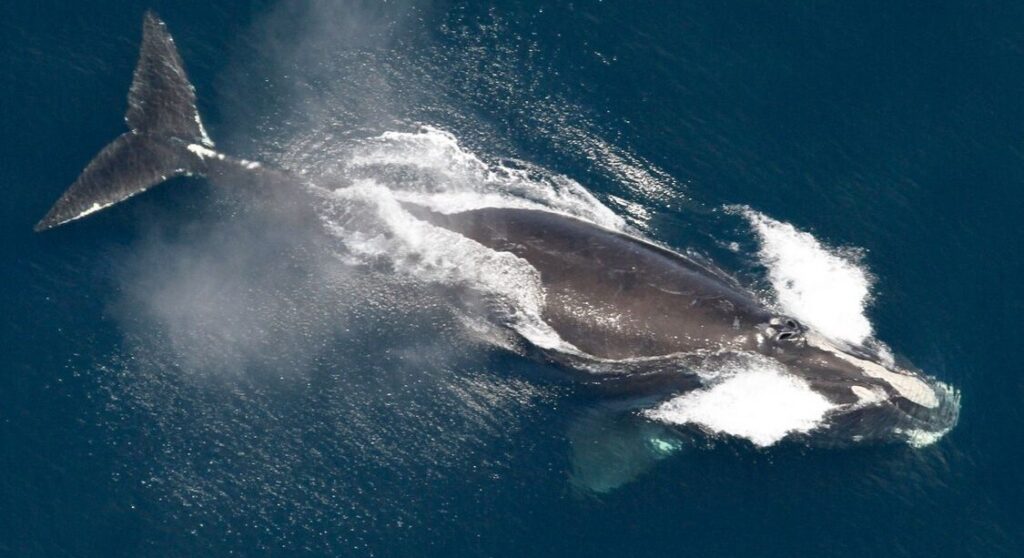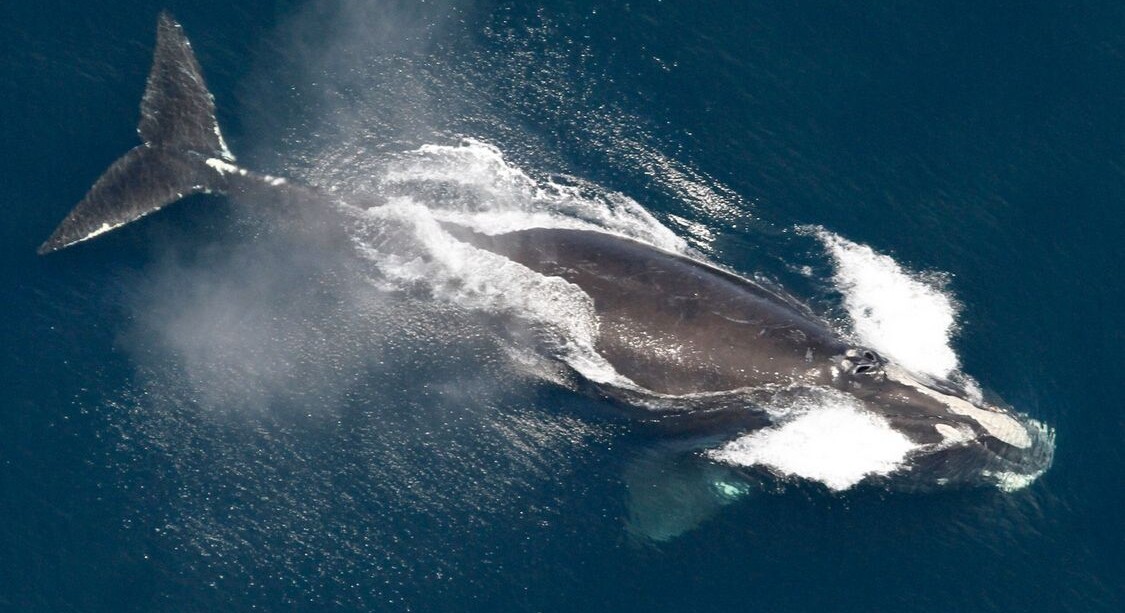 A North Atlantic right whale – credit, NOAA via AP
A North Atlantic right whale – credit, NOAA via AP
Scientists studying the North Atlantic right whale have celebrated a year without mortalities in which four new whale mothers entered the breeding population.
11 calves were born this year, the North Atlantic Right Whale Consortium reported in a document released Tuesday.
Covered by AP, the animals have now increased to 384 individuals thanks to increased measures to protect these gentle giants from collisions with ships and entanglement with fishing gear: two of their main threats.
Living as their name suggests in the North Atlantic Ocean, the animals were heavily targeted by whalers in the 18th century, but have been federally protected for decades following the commercial whaling ban in 1982.
“The slight increase in the population estimate, coupled with no detected mortalities and fewer detected injuries than in the last several years, leaves us cautiously optimistic about the future of North Atlantic right whales,” Heather Pettis, the consortium’s chairwoman, said. ”What we’ve seen before is this population can turn on a dime.”
Unlike other baleens like the fin whale, humpback, and blue whale, the North Atlantic right whale has been slow to recover, and scientists remain convinced that stronger conservation measures are needed to ensure they can continue to grow long term. The animals are less likely to breed if wounded in ship strikes or by derelict fishing equipment.
But despite the 11 newborns being less than the consortium hoped for, they were reared by both new mothers and by previous mothers who seem to be waiting less time between calves: both encouraging statistics.
WHALES COMING BACK
The animals migrate from their breeding grounds near Florida up to feed in the colder waters off Canada and the northeastern United States.
Philip Hamilton, a senior scientist with the New England Aquarium’s Anderson Cabot Center for Ocean Life, said ongoing, slow recovery is a testament to the effectiveness of conservation measures already implemented, particularly around the Saint Lawrence Gulf in Canada where the whales will sometimes travel.
“We know that a modest increase every year, if we can sustain it, will lead to population growth,” Hamilton said. “It’s just whether or not we can sustain it.”
SHARE This Encouraging News About Whales With Your Friends…

